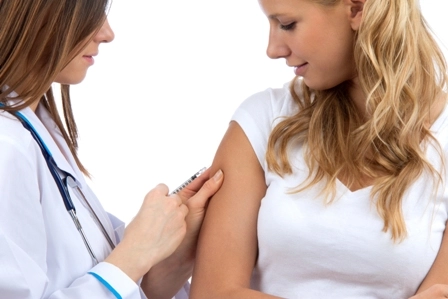Study These Steps for Successful STI Counseling, Immunization Coding

Refresh your HPV documentation skills with this scenario. Human papillomavirus (HPV) is probably the most common of all sexually transmitted infections (STIs). So common, in fact, that "nearly all sexually active men and women get the virus at some point in their lives," according to the Centers for Disease Control and Prevention (CDC) (Source: https://www.cdc.gov/std/hpv/stats.htm). Yet this seemingly harmless disease could be responsible for "about 70 percent of vaginal and vulvar cancers ... more than 60 percent of penile cancers, [and] about 70 percent of cancers of the oropharynx" (Source: https://www.cdc.gov/cancer/hpv/statistics/index.htm). As a precaution, more and more patients are requesting to be vaccinated against HPV. So, what better time for you read through the following scenario and refresh your understanding of HPV counseling and immunization coding. Scenario: An established 22-year-old female patient presents to your provider. She is not currently sexually active, but she expresses interest in being vaccinated against HPV. Your practitioner spends about 15 minutes counseling the patient about the pros and cons of the vaccination, and the patient decides that she would like to start the immunization schedule at this visit. Your provider agrees, and administers the first vaccine. Code the visit Coding this scenario begins with determining whether documentation supports reporting an appropriate evaluation and management (E/M) service. In this case, you can report the 15 minutes spent counseling the patient about the pros and cons of vaccination along with a preventive medicine counseling code if the medical record supports that the physician did more than just counsel the patient about HPV vaccination (e.g. addressed a patient's medical problem). If so, since the patient is already established at your practice, you would code an appropriate-level established patient office visit, such as 99213 (Office or other outpatient visit ...). Chelle Johnson, CPMA, CPC, CPCO, CPPM, CEMC, AAPC Fellow, billing/credentialing/auditing/coding coordinator at County of Stanislaus Health Services Agency in Modesto, California, notes that you will also need to review whether modifier 25 (Significant, Separately Identifiable Evaluation and Management Service by the Same Physician or Other Qualified Health Care Professional on the Same Day of the Procedure or Other Service) is appropriate to allow for both the sick visit as well as the immunization administration and its related counseling, "as generally the E/M and the immunization code would be inclusive unless noted by the use of the modifier." Code the counseling Johnson then reminds coders that "there are two different type of vaccine administration codes, with one being used if counseling was provided and the other just for the administration of the vaccine without counseling." However, as the patient is over the age of 18, Donelle Holle, RN, President of Peds Coding Inc., and a healthcare, coding, and reimbursement consultant in Fort Wayne, Indiana, argues that you would code the counseling separately by using 99401-99404 (Preventive medicine counseling and/or risk factor reduction intervention(s) provided to an individual (separate procedure) ...). Per CPT®, these codes are used to report services provided face-to-face by a physician or other qualified health care professional for promoting health and preventing illness or injury. They are distinct from E/M services, which, as noted above, you can report separately with modifier 25. These are time-based codes, so in this case, as your provider spent 15 minutes on the counseling, you would code 99401. Code the immunization From there, you would document the immunization separately using 90471 (Immunization administration (includes percutaneous, intradermal, subcutaneous, or intramuscular injections); 1 vaccine (single or combination vaccine/toxoid)) and one of the following HPV vaccine codes depending on the type your provider administers: "Because there has been so much confusion on when to give HPV and how many doses," Holle notes, "in December 2016 the CDC's Advisory Committee on Immunization Practices recommended a three-dose schedule 'for persons who initiate the vaccination series at ages 15 through 26 years and for immunocompromised persons'" (Source: https://www.cdc.gov/mmwr/volumes/65/wr/mm6549a5.htm). Code the reason for the encounter Finally, you need to link each of the CPT® codes to an appropriate ICD-10-CM code to indicate the reason for the service. So, for the problem-oriented E/M code, you would choose an ICD-10-CM code that captures the problem your provider has addressed. For 99401, you would choose Z71.89 (Other specified counseling), and 90471 and 90649-90651 need to be linked to Z23 (Encounter for immunization). Additionally, Johnson notes that "if the purpose of the encounter was specifically to screen for HPV, then you would use Z11.51 (Encounter for screening for human papillomavirus (HPV))." If this were the case, then "your provider would request additional laboratory services to rule out any active issues" according to Johnson.




